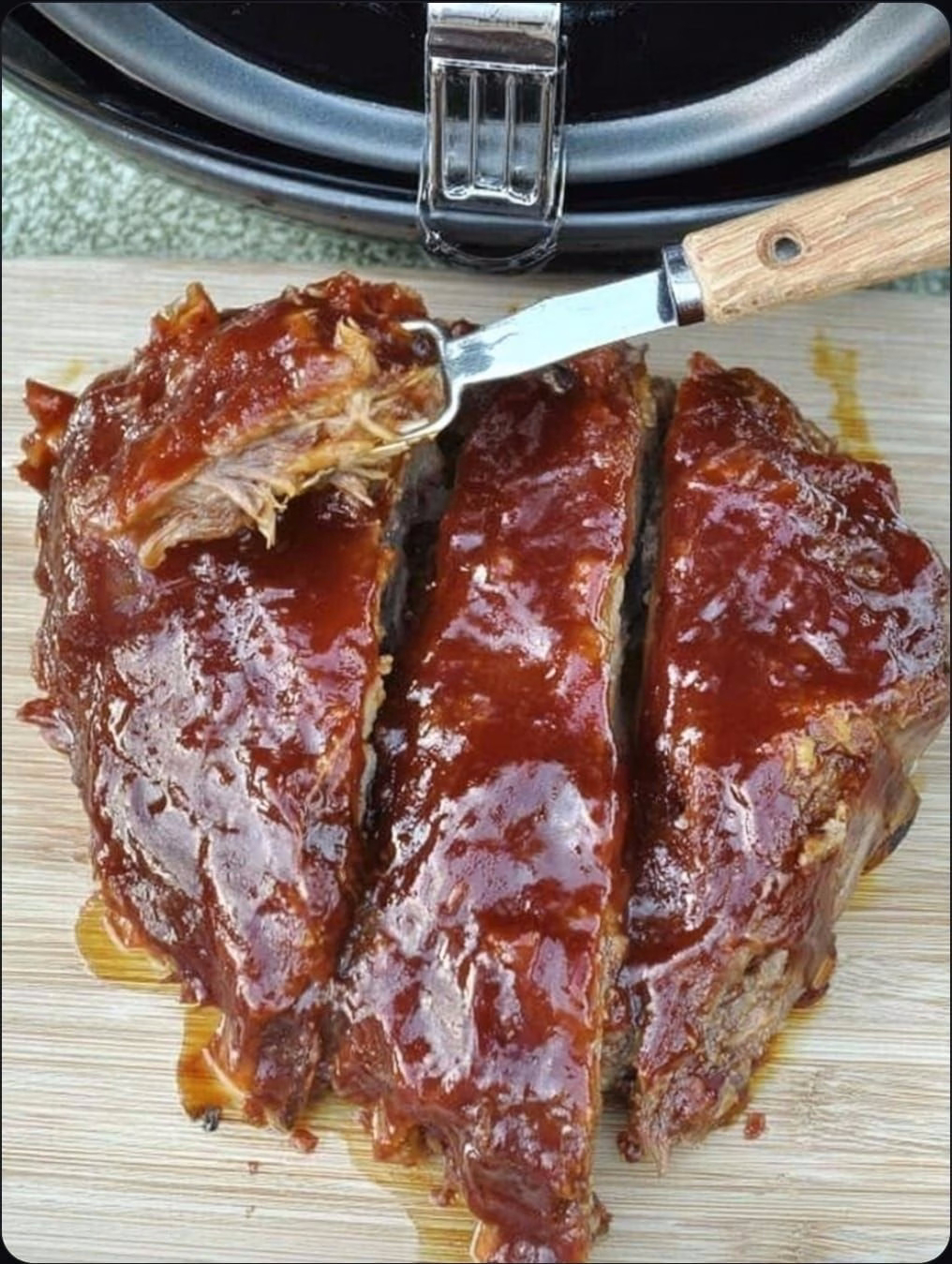Spare Ribs: Located lower down the pig, closer to the belly, spare ribs are larger, meatier, and have more fat and connective tissue. This extra fat translates to incredible flavour and moisture when cooked slowly. They require a longer cooking time but reward you with a richer, more substantial bite. They often need some trimming to fit in a standard crockpot, but the effort is well worth it for the depth of flavour.
St. Louis Style Ribs: These are spare ribs that have been trimmed to a more uniform, rectangular shape by removing the cartilage and uneven ends. This makes them easier to handle, cook, and slice. They offer the same rich flavour and meatiness as spare ribs but in a more aesthetically pleasing and manageable package. If you see “St. Louis Style” in the butcher’s case, know you’re getting a top-tier cut for barbecue.
Beef Ribs: A Heartier, More Robust Option
While less common for crockpot barbecue, beef ribs can also be incredibly delicious when slow-cooked. Short ribs, in particular, are fantastic in a crockpot. They are incredibly meaty and marbled, with thick bones, and respond exceptionally well to long, moist cooking, becoming incredibly tender and succulent. They offer a richer, beefier flavour profile compared to pork ribs, perfect for those seeking a bolder taste experience. Their substantial size means you’ll typically fit fewer in a standard crockpot.
What to Look For at the Butcher or Supermarket
No matter the type, look for ribs that have a good amount of meat on the bone – you don’t want them to be too thin or bony. A healthy marbling of fat throughout the meat is a good sign; this fat will render during cooking, keeping the ribs moist and adding flavour. Avoid packages with excessive blood or discolouration. Fresh ribs should look vibrant and have a clean, neutral smell. Don’t be afraid to ask your butcher for advice; they can often provide insights into the freshest cuts and best options for your needs.
The Crucial Pre-Prep: Removing the Membrane
This is arguably the most important, yet often overlooked, step in rib preparation. On the concave (bone) side of pork ribs, there’s a thin, silvery membrane or silverskin. This membrane is tough and unpalatable. If left on, it prevents your rubs and sauces from penetrating the meat, results in a chewy texture, and makes the ribs harder to eat. It creates a barrier, trapping fat and preventing that desired fall-off-the-bone tenderness.
To remove it, simply slide a knife under the membrane at one end of the rack, lift it up, then grasp it firmly with a paper towel (for better grip) and peel it off. It usually comes off in one satisfying piece. If it tears, simply start again from a new spot. This simple step takes less than a minute but makes a monumental difference in the final product. Trust me, once you’ve done it once, you’ll never skip it again. Now that your canvas is perfectly prepared, it’s time to lay down the foundation of flavour. This next step is where the magic truly begins to permeate every single fibre of your ribs.
Read more on next page
ADVERTISEMENT

